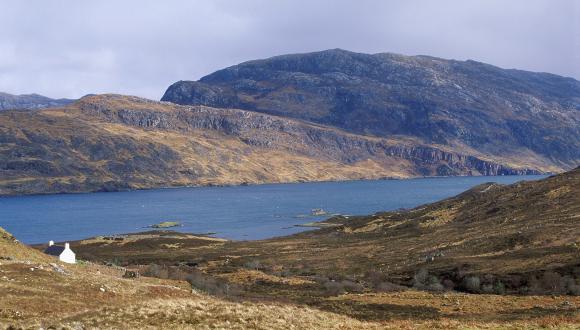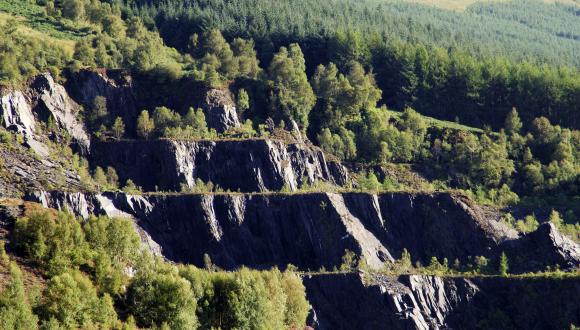Devonian rocks
Much of the ‘Old Red Sandstone’ used in our buildings was formed in the Devonian period, when Scotland lay in the subtropical region below the equator.
Scotland lay in the subtropical region below the equator during the Devonian, from 416 million to 359 million years ago.
During this time, rivers eroding the highland areas carried sediment into lowland areas where it was deposited. Sediment built up in lakes and trapped between its layers the remains of plant and fish that lived in the hot climate of the Devonian. These remains can be seen preserved in fossils we find today.
The large deposits of sediment laid down in the Devonian are often called ‘Old Red Sandstone’ sediments. Much Old Red Sandstone makes good building stone and is a distinctive feature of buildings in areas where it occurs locally – e.g. Strathmore in Angus.
For much of the Devonian, a huge inland lake existed over the areas that are now Orkney and Caithness. At times, the Orcadian Lake extended to what is now the south shore of the Moray Firth.
Where rocks occur
Devonian rocks now blanket our older geological foundations:
- in Orkney
- in Caithness
- around the Dornoch Firth and Moray Firth
- along the northern edge of the Central Belt, south of the Highland Boundary Fault
Smaller areas of Devonian rock occur elsewhere, from Shetland to the Southern Uplands.





